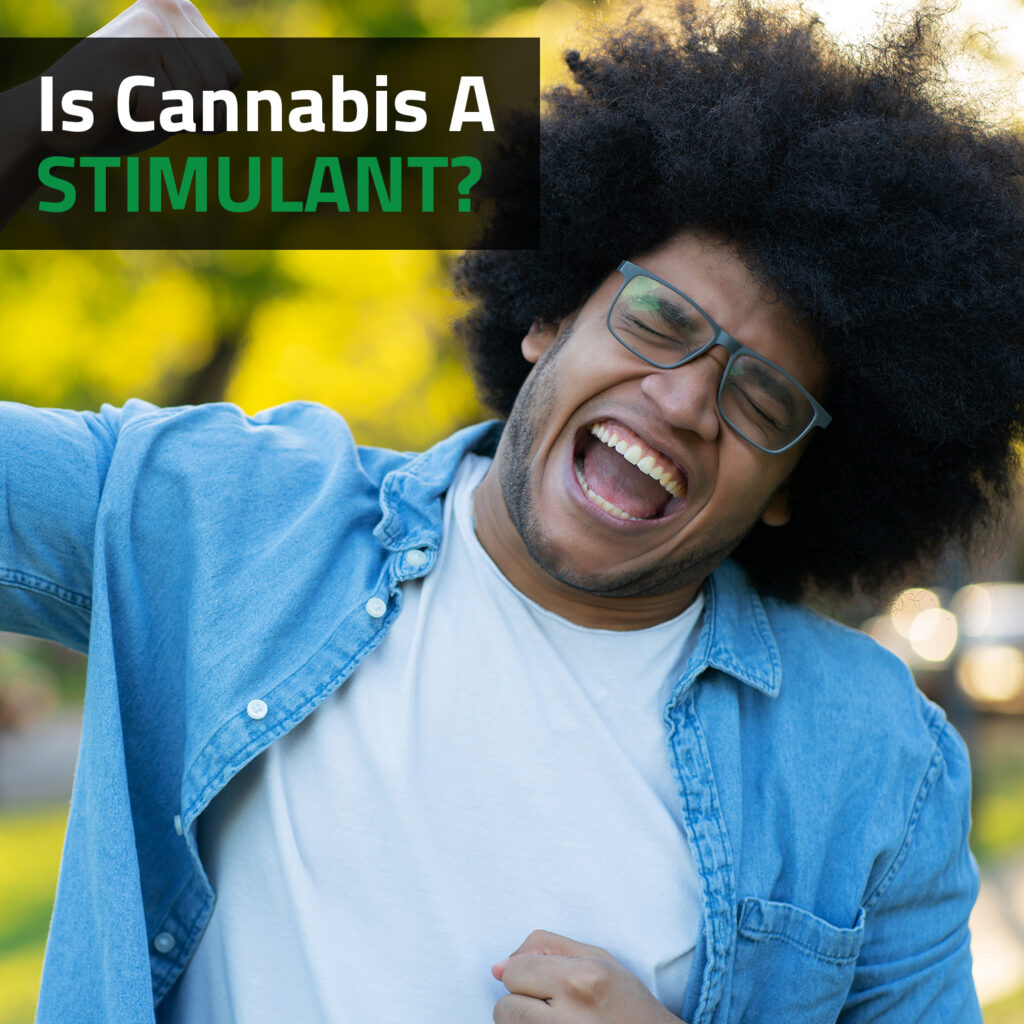Cannabis, commonly known for its relaxing properties, has long been associated with sedation and calm. However, the question of whether cannabis acts as a stimulant is increasingly being raised, especially as more people explore its wide-ranging effects on the mind and body. While many assume cannabis solely relaxes or sedates users, some report feelings of energy, creativity, and enhanced focus – effects traditionally associated with stimulants. This article explores the complex nature of cannabis and whether it can truly be considered a stimulant.
Understanding Cannabis: What Exactly Is It?
Cannabis is a psychoactive drug derived from the cannabis plant, used for centuries both medicinally and recreationally. The plant contains over 100 known cannabinoids – chemical compounds that interact with the body’s endocannabinoid system (ECS). The ECS helps regulate essential functions such as mood, memory, appetite, pain sensation, and sleep.
The two most prominent cannabinoids are:
- Tetrahydrocannabinol (THC): The primary psychoactive compound responsible for the “high” many associate with cannabis.
- Cannabidiol (CBD): A non-psychoactive compound known for its potential therapeutic benefits, such as anxiety relief, pain reduction, and anti-inflammatory properties.
Cannabis works by binding to cannabinoid receptors (CB1 and CB2) in the brain and body, creating a wide variety of physiological and psychological effects that can be both stimulating and sedating depending on the strain, dose, and individual.
Historical Context Of Cannabis Use
Cannabis use dates back thousands of years. In ancient China, it was primarily used for its medicinal benefits, including pain relief and treatment of various ailments. In India, cannabis was integrated into spiritual practices and consumed recreationally in cultural rituals. Over time, it spread to other parts of the world, evolving into both a recreational drug and a therapeutic aid.
Modern use reflects this dual heritage – cannabis is now consumed for relaxation and enjoyment, but also increasingly for conditions such as chronic pain, epilepsy, multiple sclerosis, and chemotherapy-induced nausea.
How Cannabis Affects The Body And Mind
The experience of using cannabis varies greatly depending on several factors: the cannabinoid profile (particularly the ratio of THC to CBD), the method of consumption, and the individual’s body chemistry.
Common effects of cannabis include:
- Euphoria: A feeling of intense happiness or contentment.
- Relaxation: Mental and physical calmness; tension release.
- Altered perception of time and space: Time may feel slower, and colours, sounds, and touch may be enhanced.
- Increased appetite: Often referred to as “the munchies.”
These effects are primarily driven by THC’s interaction with the brain’s CB1 receptors, which influence pleasure, memory, coordination, and concentration.
Is Cannabis A Stimulant?
To understand whether cannabis can be classified as a stimulant, we need to understand what stimulants are.
Definition Of A Stimulant
Stimulants are substances that increase activity in the central nervous system. They elevate heart rate, enhance mood, increase alertness, and improve focus. Common stimulants include caffeine, amphetamines (such as Adderall), and cocaine.
Mechanisms Of Action For Stimulants
Stimulants primarily work by increasing the levels of neurotransmitters like dopamine and norepinephrine in the brain. These chemicals are associated with pleasure, energy, and attention. They are often used medically to treat conditions like ADHD, narcolepsy, and depression, and recreationally for their energising effects.
Comparing Cannabis To Traditional Stimulants
Cannabis and stimulants differ significantly in how they act on the brain, but some overlapping effects exist.
Similarities
- Increased energy and alertness: Some strains of cannabis – especially sativa-dominant strains – are known to increase energy, enhance creativity, and promote wakefulness.
- Improved mood: Both stimulants and cannabis can elevate mood by influencing dopamine levels in the brain.
- Enhanced focus (in low doses): In smaller doses, cannabis may help some individuals focus or feel more mentally sharp, particularly when using strains higher in THC and lower in CBD.
Differences
- Primary mechanism: While stimulants work by enhancing neurotransmitters like dopamine directly, cannabis interacts with the ECS, influencing dopamine and other neurotransmitters more indirectly.
- Variable outcomes: Unlike most stimulants, cannabis has biphasic effects – meaning small doses may be stimulating while higher doses may be sedating or impairing.
Cannabis Strains And Their Effects
Not all cannabis strains are created equal. Their chemical composition determines whether they lean more toward stimulating or sedating effects.
Sativa-Dominant Strains
- Often linked with energising, uplifting effects.
- Used for daytime consumption.
- May enhance creativity and focus.
Indica-Dominant Strains
- Known for sedative, body-relaxing effects.
- Commonly used for pain relief and as a sleep aid.
- Best suited for nighttime use.
Hybrid Strains
- A blend of sativa and indica effects.
- Effects vary depending on the dominant strain and cannabinoid content.
Methods Of Cannabis Consumption And Their Impact
Cannabis can be consumed in several ways, each with different onset times and durations:
- Smoking/vaping: Delivers quick effects (within minutes), usually peaking within 30 minutes to an hour. Offers more immediate stimulating or relaxing results depending on the strain.
- Edibles: Slower onset (30 minutes to 2 hours) but longer-lasting effects. Effects can be more intense and unpredictable, especially if too much is consumed.
- Tinctures: Fast-acting when taken sublingually (under the tongue). Allow for more controlled dosing and are often used for medicinal purposes.
The method of intake plays a significant role in determining whether the effects are stimulating or sedating.
Research On Cannabis As A Stimulant
Although cannabis is not formally classified as a stimulant, some research suggests it can produce stimulating effects in low to moderate doses. Some studies note that THC could increase heart rate and potentially lead to heightened arousal and energy, though individual reactions vary.
Another area of interest is cannabis’s impact on dopamine release. While it does increase dopamine levels temporarily – similar to stimulants – the effect is usually less pronounced and more short-lived.
Medical And Therapeutic Comparisons
Cannabis is commonly prescribed for conditions involving pain, nausea, anxiety, and seizures – valued for its anti-inflammatory, analgesic, and neuroprotective properties.
Stimulants are usually prescribed for disorders like ADHD, narcolepsy, and sometimes depression. They are used to increase focus, alertness, and energy.
While both substances can provide therapeutic benefits, they are typically prescribed for very different reasons and health conditions.
So, is cannabis a stimulant? The answer is nuanced. Cannabis is not classified as a traditional stimulant, yet it can have stimulant-like effects, especially in low doses and when using certain strains. Some users report feeling more focused, energetic, and uplifted – experiences that parallel those induced by mild stimulants like caffeine.
However, cannabis’s full range of effects – spanning from sedation to stimulation – depends on a variety of factors including cannabinoid content, strain type, dosage, method of consumption, and individual response.
Ultimately, cannabis is best described as a multifaceted psychoactive substance with both stimulant and sedative properties. Its dual nature is what makes it both complex and versatile in recreational and therapeutic contexts.
If you are considering using cannabis for its energising effects, consult with a knowledgeable healthcare provider or cannabis expert to select the right strain and dose that aligns with your goals. Responsible use is essential to maximising benefits while minimising potential side effects.
Recommended products
-
Black Leaf – “Wand Vape” Steel Hand Vaporizer
R375.00 -
DAVINCI MIQRO-C Vaporizer
R2,750.00 -
Zootly CBD Jellies Jar – Sour Apple (60mg)
R135.00 -
Brutal CBD – Black Currant
R195.00 – R380.00Price range: R195.00 through R380.00










